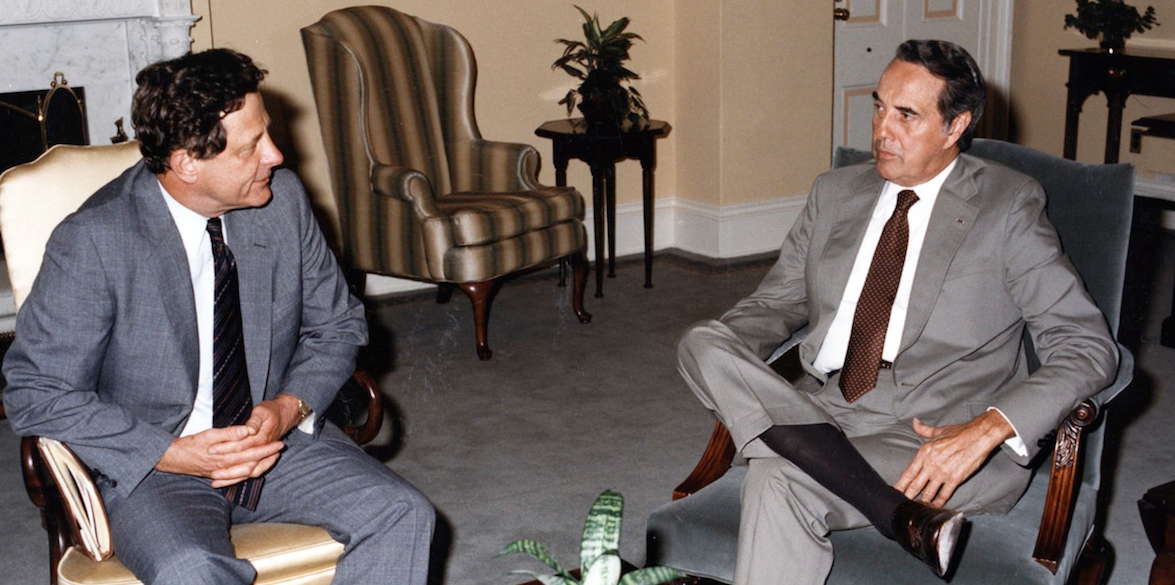Addressing the True Impact of the Bayh-Dole Act
Since the passage of the Bayh-Dole Act in 1980, many researchers have debated its contribution to the transfer of technology from universities to industry. Some credit the act as an engine of economic growth responsible for the emergence of the biotechnology industry. Critics say that the law decreased data sharing and basic research and increased health care costs. Others think that the act had little impact and that changes in university patenting were inevitable.
University patenting would have increased regardless of the Bayh-Dole Act. However, the act did help universities license patents, creating positive economic benefits especially in the biotechnology industry.
Background
The Bayh-Dole Act was intended to improve the commercialization of federally funded research.

Before 1980, only 5% of government-owned patents were ever utilized in industry. Corporations found it difficult, risky or unappealing to receive licenses for government patents. Several government agencies did not want to give up ownership of patents to universities or corporations. Agencies such as the National Science Foundation tended to give nonexclusive licenses to anyone, unappealing for companies. As it was easy for any company to procure licenses, the system did not incentivize companies to purchase licenses; most wanted exclusive rights.
The Bayh-Dole Act enabled institutions to keep control of patents invented using federally funded research. The university or business could then grant licenses on its own terms. The act also required universities or businesses to have clear patent policies and encourage development of inventions.
Did the Bill Work?
Claims that the Bayh-Dole Act alone led to increased patenting and economic activity surrounding university patenting are not true. Economic models show that the acceleration of patenting would still have occurred even without the act. David Mowery finds that universities increased their shares of patenting from 0.3% in 1963 to 4% by 1999. However, he notes that this increase had already begun before 1980, which indicates that the Bayh-Dole Act was not its cause.
Since the passage of the Bayh-Dole Act, more than 5,000 new companies have formed from federally funded university research. In 2008, more than 600 new university products were introduced to the marketplace. According to MIT, about 30 billion dollars of economic activity per year and 250,000 jobs can be attributed to technology born in academic institutions.
The Bayh-Dole Act may not have been the only contributor, but these large numbers show the importance of university innovation to the economy and make it clear that innovation spurring legislature can have enormous positive effects on economic growth.
Creation of the Biotechnology Industry
From the 1968-1970 period to the 1978-1980 period, biomedical university patents increased by 295%. Biomedicine, an important part of biotechnology, was therefore growing rapidly before the introduction of the Bayh-Dole Act. Most likely increased funding in the field, advances in science and emergence industry interest also played major roles in the growth of university patenting in this area.
The Bayh-Dole Act likely contributed to increased licensing of university biotechnology patents. The ability of universities to license patents created strong incentives for many scientist-entrepreneurs to form companies around their inventions. At least 50% of current biotech companies began as a result of a university license. Additionally, 76% of biotechnology companies have at least one license from a university.
These license based biotech companies have made huge impacts on the economy. University licensing of biotechnology patents generated more than $40 billion in economic activity in 1999. According to Boston University, biotechnology companies represented over 1.42 million jobs in 2008, and the bioscience sector as a whole represents an employment impact of 8 million jobs. By 2009, 1,699 biotech firms generated annual sales of $48.2 billion.
Addressing Criticisms
Critics of the Bayh-Dole Act cite the decrease of data sharing, higher health care costs and a shift away from fundamental research as flaws of the law.
Because researchers patent new inventions, they might tie up research data in patent rights. This could prevent other researchers from accessing this data, slowing the research process. An article by Neil Thompson and others suggest that this isn’t true in practice. They find no evidence that licensing of academic patents limits the sharing of research data. However, their work leaves open whether licenses on research tools lead to restrictions on continual research in a subject.
Many also argue that health care costs have increased as a result of the Act. Biomedical university patents often can be utilized in the process of drug creation. As these discoveries are not final products, companies must license each patent that they use to create a drug. The cost of licensing many of these patents allegedly drives up the cost of the final product, hurting the consumer. The NIH and USPTO have created guidelines to prevent the unreasonable licensing of biomedical patents. However, these guidelines are not all concrete.
While this “royalty stacking” may contribute to high prices, it is unfair to blame the costs solely on the Bayh-Dole Act. Drug development includes a multitude of phases with high costs that extend beyond patents at each step. Many drugs could also not have been developed without the help of the patented technologies.
Finally, others point out that applied research generates more money from patenting. They argue that the Bayh-Dole Act therefore incentivizes universities to focus on applied research instead of basic research. This too is not true. According to the National Science Foundation, the percentage of basic science research from 1980 to 2001 increased from 66.6% to 74.1%. Applied researched actually decreased from 33.4% to 25.9%.
Conclusion
The Bayh-Dole Act was not the sole factor in the increase of university patenting. However, it does appear to have played an important role in the licensing of university patents, particularly in the biotechnology industry.
The biotechnology is sector is large and growing. In 1980, it was almost nonexistent. By 2009, the sales of just 1,699 biotech firms were worth more than 2.5% of U.S. GDP. Academic intellectual property provides the crucial foundation for this sector. Further incentivizes for university patenting and its licensing could therefore drive yet more economic growth.
In addition, the government could encourage the use of unlicensed academic patents by offering tax breaks to companies who commercialize them. It could also encourage universities that excel at technology transfer such as Stanford or MIT to share best practices to other universities.



